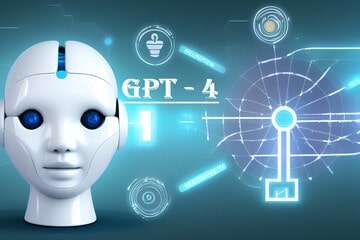
Must Know PySpark Interview Questions (Part-1)
“Are you preparing for a pySpark interview? Brush up your skills with these top pySpark interview questions! From basic concepts to complex algorithms, this comprehensive list covers all the essential topics that will help you crack your next pySpark interview with confidence.
Whether you’re a beginner or an experienced data scientist, these interview questions are sure to test your knowledge and take your pySpark skills to the next level!”
Introduction
PySpark has emerged as one of the most well-liked technologies in the field of Big Data for handling enormous amounts of data in a distributed computing setting. Users can create Python code and run it on a distributed computing system thanks to PySpark, a potent Python-based framework built on top of Apache Spark. Since PySpark is becoming increasingly popular, many businesses are looking for experts with such talents, and PySpark job interviews can be difficult.

To help you prepare for your PySpark interview, we have compiled a list of some of the most commonly asked PySpark interview questions. In this blog post, we will cover a range of topics, from the basics of PySpark to more advanced concepts, and provide you with the knowledge you need to succeed in your PySpark interview.
Q. What is PySpark?
Almost always, you will be asked this during your PySpark interview.
The Python API for Spark is called PySpark. It facilitates communication between Spark and Python. The processing of structured and semi-structured data sets is PySpark’s primary focus, but it also offers the ability to read data from numerous sources in various data formats. Using PySpark, we may interact with RDDs (Resilient Distributed Datasets) in addition to these characteristics. The py4j library is used to implement each of these functionalities.
Q. What are PySpark’s benefits and drawbacks? (A frequently requested question in PySpark interviews)
The following are some benefits of using PySpark:
- PySpark makes it very easy to develop parallelized programs.
- Many helpful built-in algorithms are present in PySpark.
- All faults, including synchronization errors, are handled by PySpark.
- Every node and network has been abstracted.
The drawbacks of using PySpark include the following:
- PySpark often makes it harder to articulate problems in a MapReduce form
- PySpark is not as efficient as other programming languages.

Q. What kinds of algorithms does PySpark support?
The different algorithms supported by PySpark are:
1. spark.mllib
2. mllib.clustering
3. mllib.classification
4. mllib.regression
5. mllib.recommendation
6. mllib.linalg
7. mllib.fpm
Q What is RDD, and how is it different from a DataFrame in PySpark?
RDD stands for Resilient Distributed Dataset, and it is the fundamental data structure in PySpark. An RDD is an immutable distributed collection of objects, which can be processed in parallel across a cluster. On the other hand, a data frame is a distributed collection of structured data organized into named columns. Unlike RDDs, DataFrames are optimized for structured data processing and provide a more expressive API for performing SQL-like operations.
Q How do you create an RDD in PySpark?
To create an RDD in PySpark, you can either parallelize an existing Python collection or load data from an external storage system such as HDFS or S3. For example, to create an RDD from a list of numbers, you can use the following code:
Python
Copy code
rdd = sc.parallelize([1, 2, 3, 4, 5])
Q What’s the difference between an RDD, a DataFrame, and a DataSet?
RDD
- It is the structural square of Spark. All datasets and data frames are included in RDDs.
- RDDs can be effectively reserved if the same set of data needs to be calculated repeatedly.
- It’s more frequently used to manipulate data with functional programming structures than with domain-specific expressions and is helpful when you need to perform low-level transformations, operations, and control on a dataset.
DataFrame
- It makes the structure — lines and segments — visible. It can be compared to a database table.
- Optimized Execution Plan: Query plans are built using the catalyst analyzer.
- Compile Time well-being, or the inability to manage information when the structure of the data is unclear, is one of the data frame drawbacks.
Additionally, if you’re using Python, start with DataFrames and move to RDDs if you need more flexibility.
DataSet
- It has the best encoding component and, in contrast to information edges, it organizes time security.
- The dataset is the way to go if you want more compile-time type safety or if you want to be typed JVM objects.
Additionally, you can use datasets when trying to take use of Catalyst optimization or even when trying to take advantage of Tungsten’s quick code generation.
Q What is lazy evaluation in PySpark, and why is it important?
Lazy evaluation is a technique used in PySpark to defer the computation of transformations on an RDD until an action is performed. This approach optimizes performance by minimizing the amount of data that needs to be processed and reducing the overhead of communication between nodes. The lazy evaluation also enables PySpark to optimize the execution plan for a set of transformations and perform them in a more efficient manner.

Q What is the difference between map() and flatMap() in PySpark?
- The map() function in PySpark applies a function to each element in an RDD and returns a new RDD with the results.
- The flatMap() function, on the other hand, applies a function to each element in an RDD and returns a flattened RDD of the results.
- This means that flatMap() can produce more output elements than input elements, while map() produces the same number of output elements as input elements.
Q How do you perform a join operation between two DataFrames in PySpark?
- To perform a join operation between two DataFrames in PySpark, you can use the join() function.
- The join() function takes two DataFrames and a join type as input parameters and returns a new DataFrame with the results of the join.
For example, to perform an inner join between two DataFrames based on a common column, you can use the following code:
Python
Copy code
joined_df = df1.join(df2, df1.common_column == df2.common_column, ‘inner’)
Q What is the difference between persist() and cache() in PySpark?
The persist() function in PySpark is used to persist an RDD or DataFrame in memory or on disk, while the cache() function is a shorthand for persisting an RDD or DataFrame in memory only. The persist() function provides more fine-grained control over the storage level of the data and allows you to specify whether to store the data in memory or on disk, as well as the serialization format to use.
Q How do you use PySpark to read data from a CSV file?
To read data from a CSV file in PySpark, you can use the read.csv() function. The read.csv() function takes a path to the CSV file and returns a DataFrame with the contents of the file.
Q What is a Pipeline in PySpark MLlib?
- A Pipeline is a sequence of stages in PySpark MLlib that defines a machine learning workflow.
- Each stage is either an Estimator or a Transformer, and the output of one stage becomes the input of the next stage.
- The pipeline can be trained and applied to new data for prediction.
Q. What is PySpark SparkConf?
PySpark SparkConf is mainly used to set the configurations and the parameters when we want to run the application on the local or the cluster.
We run the following code whenever we want to run SparkConf:
class pyspark.Sparkconf
( local defaults = True,
_jvm = None,
_jconf = None )
Q How do you define PySpark StorageLevel?
PySpark StorageLevel is used to manage the RDD’s storage, make judgments about where to store it (in memory, on disk, or both), and determine if we should replicate or serialize the RDD’s partitions. StorageLevel’s code is as follows:
Pyspark class.(UseDisk, UseMemory, UseOfHeap, Deserialized, Replication = 1)
Q. What is PySpark SparkJobinfo?
One of the most typical PySpark interview questions.
To find out information about SparkJobs that are being executed, use PySpark SparkJobinfo. The SparkJobInfo use code is as follows:
class Namedtuple(“SparkJobInfo”, “jobId stageIds status”) for SparkJobInfo
Q Explain the use of StructType and StructField classes in PySpark with examples.
In PySpark, the StructType and StructField classes are used to specify the DataFrame’s structure and build complicated columns like nested struct, array, and map columns.
- Column name, column data type, field nullability, and metadata are determined by the collection of StructField objects known as StructType.
– To represent the structure of the DataFrame, PySpark imports the StructType class from pyspark.sql.types. The printSchema() function of the DataFrame shows StructType columns as “struct.” - PySpark provides the pyspark.sql.types import StructField class, which has the metadata (MetaData), the column name (String), column type (DataType), and nullable column (Boolean), to define the columns.
Example showing the use of StructType and StructField classes in PySparkimport pyspark
from pyspark.sql import SparkSession from pyspark.sql.types import StructType, StructField, StringType, IntegerTypespark = SparkSession.builder.master(“local[1]”) \
.appName(‘ProjectPro’) \
.getOrCreate()
data = [(“James”,””,” William”,”36636″,”M”,3000),
(“Michael”,”Smith”,””,”40288″,”M”,4000),
(“Robert”,””,”Dawson”,”42114″,”M”,4000),
(“Maria”,”Jones”,”39192″,”F”,4000)
]
schema = StructType([ \
StructField(“firstname”,StringType(),True), \
StructField(“middlename”,StringType(),True), \
StructField(“lastname”,StringType(),True), \
StructField(“id”, StringType(), True), \
StructField(“gender”, StringType(), True), \
StructField(“salary”, IntegerType(), True) \
])
df = spark.createDataFrame(data=data,schema=schema)
df.printSchema()
df.show(truncate=False)
Q What different approaches are there to dealing with duplicate rows in a PySpark DataFrame?
- Row duplication can be handled in PySpark data frames in one of two ways. While dropDuplicates() removes duplicate rows based on one or more columns, distinct() in PySpark drops duplicate rows (all columns) from a DataFrame.
- The distinct() and drop duplicates () methods are used in the following example to demonstrate their use.
We must first make a sample data frame.
import pyspark
from pyspark.sql import SparkSession
from pyspark.sql.functions import expr
spark = SparkSession.builder.appName(‘ProjectPro).getOrCreate()
data = [(“James”, “Sales”, 3000), \
(“Michael”, “Sales”, 4600), \
(“Robert”, “Sales”, 4100), \
(“Maria”, “Finance”, 3000), \
(“James”, “Sales”, 3000), \
(“Scott”, “Finance”, 3300), \
(“Jen”, “Finance”, 3900), \
(“Jeff”, “Marketing”, 3000), \
(“Kumar”, “Marketing”, 2000), \
(“Saif”, “Sales”, 4100) \
]
column= [“employee_name”, “department”, “salary”]
df = spark.createDataFrame(data = data, schema = column)
df.printSchema()
df.show(truncate=False)
Q. Explain PySpark UDF with the help of an example.
The most important aspect of Spark SQL & DataFrame is PySpark UDF (i.e., User Defined Function), which is used to expand PySpark’s built-in capabilities. UDFs in PySpark work similarly to UDFs in conventional databases. We write a Python function and wrap it in PySpark SQL udf() or register it as udf and use it on DataFrame and SQL, respectively, in the case of PySpark.
Example of how we can create a UDF
1. First, we need to create a sample dataframe.
spark = SparkSession.builder.appName(‘ProjectPro’).getOrCreate()
column = [“Seqno”,”Name”]
data = [(“1”, “john jones”),
(“2”, “tracey smith”),
(“3”, “amy sanders”)]
df = spark.createDataFrame(data=data,schema=column)
df.show(truncate=False)
2. The next step is creating a Python function.
The code below generates the convertase() method, which accepts a string parameter and turns every word’s initial letter to a capital letter.
def convertCase(str):
resStr=””
arr = str.split(“ “)
for x in arr:
resStr= resStr + x[0:1].upper() + x[1:len(x)] + “ “
return resStr
3. The final step is converting a Python function to a PySpark UDF.
By passing the function to PySpark SQL udf(), we can convert the convertCase() function to
UDF(). The org.apache.spark.sql.functions.udf package contains this function. Before we
use this package, we must first import it.
The org.apache.spark.sql.expressions.UserDefinedFunction class object is returned by the
PySpark SQL udf() function.
“”” Converting function to UDF “””
Q. What do you mean by ‘joins’ in PySpark DataFrame? What are the different types of joins?
In PySpark, joins are used to connect two DataFrames; by connecting them, one can connect more DataFrames. Among the SQL join types it supports are INNER Join, LEFT OUTER Join, RIGHT OUTER Join, LEFT ANTI Join, LEFT SEMI Join, CROSS Join, and SELF Join.
PySpark Join syntax isjoin(self, other, on=None, how=None)
The join() procedure accepts the following parameters and returns a DataFrame-
‘other’: The join’s right side;
‘on’: the join column’s name;
‘how’: default inner (Options are inner, cross, outer, full, full outer, left, left outer, right, right
outer, left semi, and left anti.)
Types of Join in PySpark DataFrame
Q. What is an ArrayType in PySpark? Describe using an example.
A collection data type called PySpark ArrayType extends PySpark’s DataType class, which serves as the superclass for all types. All ArrayType elements should contain items of the same kind. ArrayType instances can be created using the ArraType() function. ValueType and valueContainsNull, an optional argument that determines if a value can accept null and is always set to True, are the two arguments it accepts. ValueType in PySpark ought to extend the DataType class.
from pyspark.sql.types import StringType, ArrayType
arrayCol = ArrayType(StringType(),False)
Conclusion
pySpark is a potent framework for handling big datasets in a distributed computing environment, to sum up. It’s critical to have a solid understanding of pySpark’s architecture, APIs, data structures, and interface with other technologies like Hadoop and SQL if you’re getting ready for a pySpark interview. There may be many more interview questions that are unique to your particular job function or industry beyond those that are addressed in this blog. You can, however, improve your chances of impressing the interviewer and getting the pySpark job of your dreams by going through these questions again and putting together insightful responses.

Remember, the key to success in any interview is to be confident, knowledgeable, and able to demonstrate your skills through practical examples and real-world scenarios. Good luck with your pySpark interview!







